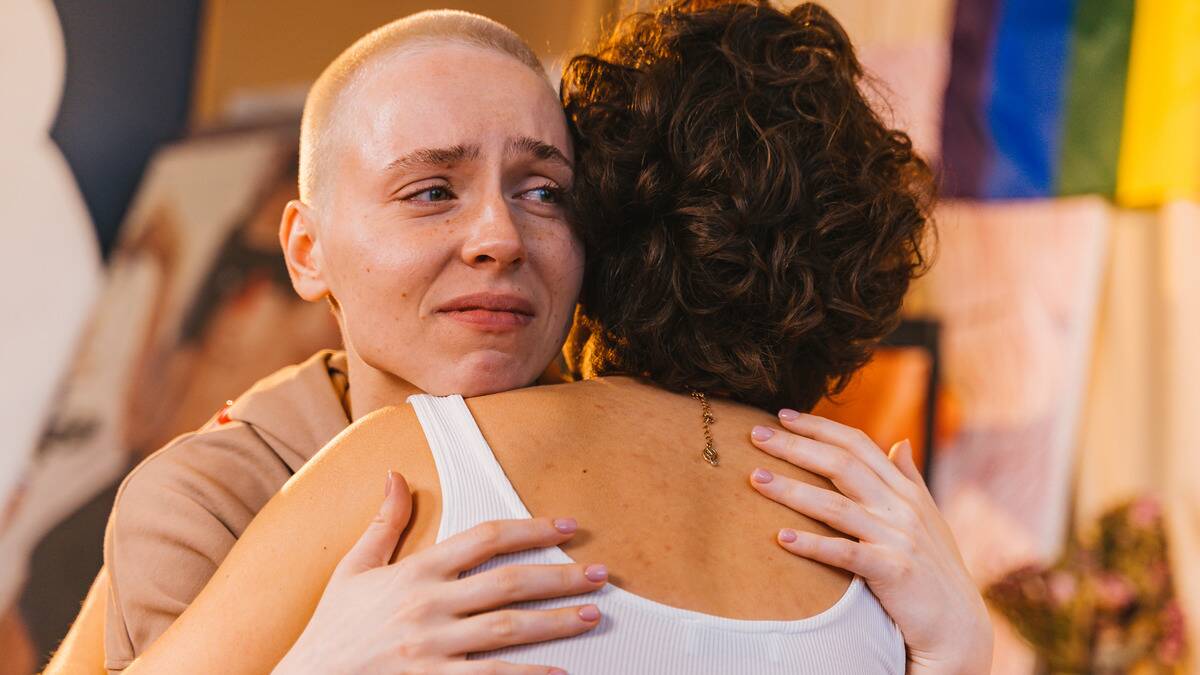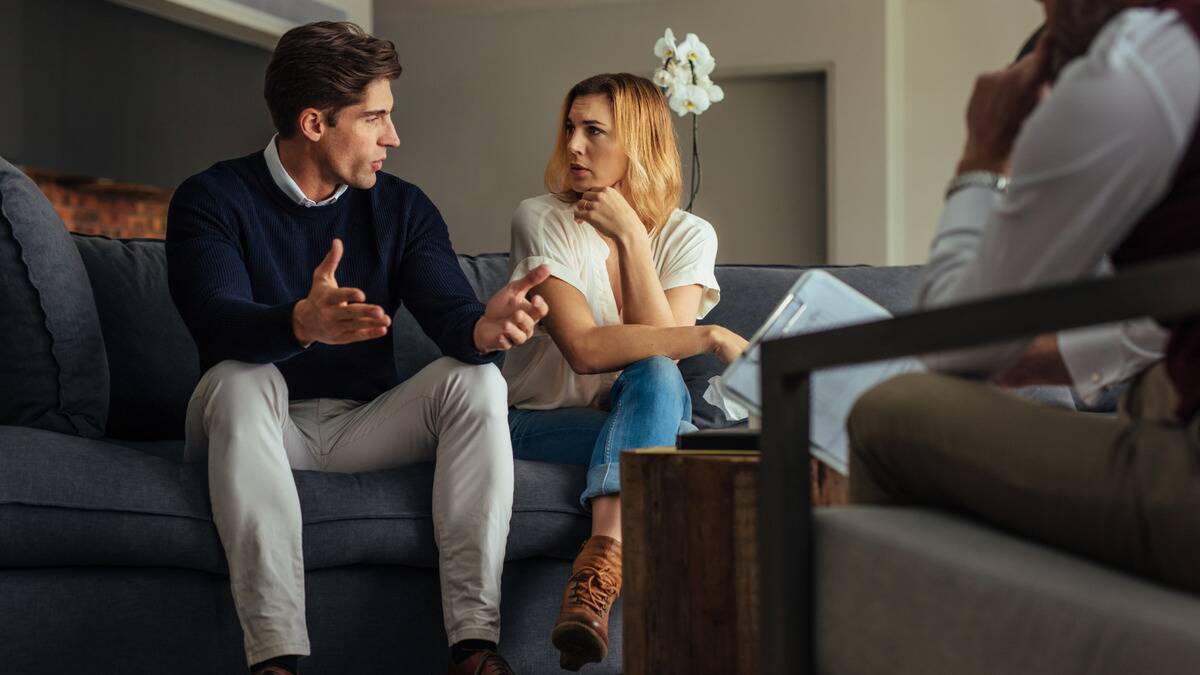How Disorganized Attachment Impacts Your Relationship, And How To Fix It
In relationship psychology, there's something called attachment theory, a theory that gives titles to the different archetypal ways that people interact in their relationships. These attachment 'styles' define how we look at love in our lives, with some being tricker than others to really get a handle on.
Disorganized attachment is one such style, also known as fearful-avoidant, which involves a lot of anxiety and, well, avoidance. It can have a huge impact on a relationship, but there are ways to counteract it and create stronger love from within.
No relationship is beyond saving, not if you truly love them and are willing to put in the work needed to change. But where do you even start?
The Healing Relationships Bundle gives you everything you need to work through any issues and create a plan for the future, one that will help create a happier, healthier partnership. Click here to learn more today and reignite your love!

To sign up for the Higher Perspectives daily horoscope, click here!
Understanding Disorganized Attachment Style

Disorganized attachment is a complex and often misunderstood attachment style, many people being fearful of the very idea. Unlike secure attachment, where a couple feels safe and confident in their connection, disorganized attachment means there's a lack of effective strategies for dealing with stress and emotional needs.
This can lead to unpredictable and confusing behaviors in relationships, making it challenging for both partners to navigate the emotional ups and downs. Understanding what disorganized attachment looks like in a relationship can help you work with it, not in spite of it.
Seeing The Signs

One of the first steps in addressing disorganized attachment in a relationship is recognizing the signs in your partner (or yourself). People with disorganized attachment may exhibit erratic behaviors within the relationship, such as sudden mood swings, inconsistent communication, and difficulty trusting others, even their own partner.
They might also have a tendency to push their partner away, only to later seek closeness and reassurance, and they might have a lot of back-and-forth in their emotions. These patterns create a cycle of confusion and instability, making it difficult for both halves to feel secure and understood.
How We Were Raised

Childhood experiences and upbringing play a significant role in the development of disorganized attachment, or any other attachment style for that matter. Often, those with disorganized attachment have experienced trauma, neglect, or inconsistent caregiving during their formative years.
This type of tumultuous childhood can lead to a deep-seated fear of abandonment and difficulty regulating emotions, as well as the other lasting effects that trauma has on the brain. In relationships, this can manifest as a heightened sensitivity to perceived rejection, near-constant doubt, and an inability to form stable bonds with others.
Talking It Out

Communication is perhaps one of the most important elements of any healthy relationship, but disorganized attachment can greatly change how that communication works. Having disorganized attachment means one may struggle to express their needs clearly, or they may not be able to vocalize a concern, leading to misunderstandings and conflicts.
They might also have difficulty interpreting their partner's intentions, often assuming the worst and reacting defensively. This can create feelings of frustration, making it difficult to resolve conflicts, meaning negative feelings can fester and grow unabated.
The Fear Inside

Fear and anxiety are at the core of disorganized attachment. Those with it often live in a state of heightened alertness, constantly scanning for potential threats, 'proof' that something is wrong, or signs of abandonment. This can easily lead to hypervigilance, not to mention an inability to relax or trust their partner.
This pervasive sense of fear can result in not just anxiety for the person feeling it but also controlling behaviors, jealousy, and an overwhelming need for reassurance, all of which can put a massive strain on a couple.
You can start fixing the problems in your relationship today, click here to get started and see what love awaits.
Comfort And Care

Managing disorganized attachment in a partner or yourself requires patience, understanding, and a willingness to work through challenges together. The best thing a couple can do is commit to creating a safe and supportive environment where both halves can express their fears and anxieties without judgment. This opens up communication and ensures that neither half will be judged for speaking their mind.
Seeking the help of a therapist or counselor is also a good idea, as a disorganized attachment can be dismantled much easier with professional advice. Fostering and reinforcing that your relationship is a safe space can help soothe the disorganized person's anxieties.
Examining Ourselves

The work doesn't end there, though. Self-awareness and commitment to personal growth are also needed to fully address disorganized attachment. Those with disorganized attachment need to recognize their own patterns of behavior and understand how their past experiences influence their current relationships.
This self-awareness can lead to greater empathy and compassion not just for the partner navigating this style with them but also for themself, fostering better understanding on all sides. Regular self-care practices, such as committing to healthier habits or having constructive ways to express and process one's emotions, will help develop better emotional regulation, which will then better the relationship!
The Building Of Trust

However, none of this change can happen unless there's already trust in the relationship. Without trust, no one will want to change, adapt, or work on any glaring issues. Building trust is a gradual process that requires commitment and effort from both partners, and this becomes even more true when disorganized attachment is involved.
Patience and empathy should be the guiding forces here, recognizing that disorganized attachment is rooted in insecurity. By consistently showing up for each other, reinforcing positive behaviors, and taking however much time is needed to work through problems, a couple can gradually create a foundation of trust that the rest of the relationship can then be built upon.
A Professional's Insights

As mentioned, but worth repeating, seeking professional help can be a necessary step in addressing disorganized attachment issues in a relationship. Therapists and counselors who specialize in attachment theory can provide valuable insights and strategies for managing the challenges associated with this attachment style.
Therapy can also offer a safe space for both partners to explore their emotions, work through past traumas, and develop healthier ways of relating to each other. With the guidance of a professional, couples can learn to navigate the complexities of disorganized attachment and work together toward a more resilient, fulfilling relationship.
Moving Forward, Stronger

Understanding what disorganized attachment looks like in a relationship is the first step toward creating a healthier future. By recognizing the signs, addressing the underlying causes, and implementing strategies for managing disorganized attachment, couples can work together to build a more secure and supportive relationship.
It's important to approach this journey seriously. This will take time, and take work, you have to really want better for yourself and/or your partner. Healing is possible, transformation can happen, there's a healthier, happier future for you both, but you'll never see it if you don't put in the effort!





